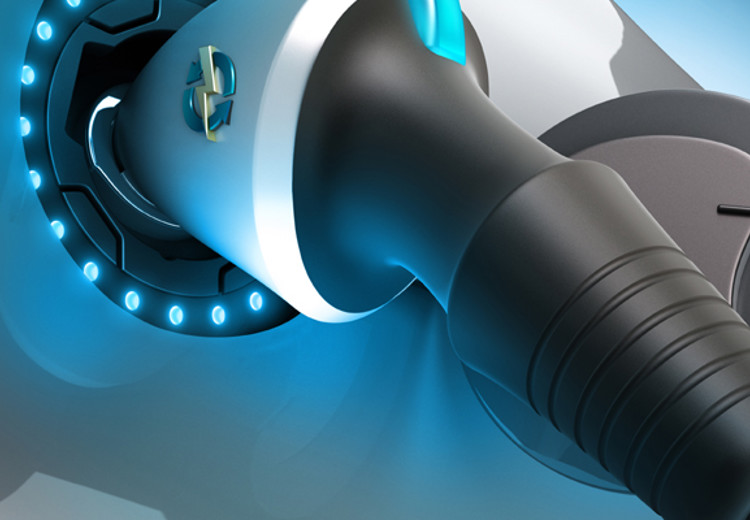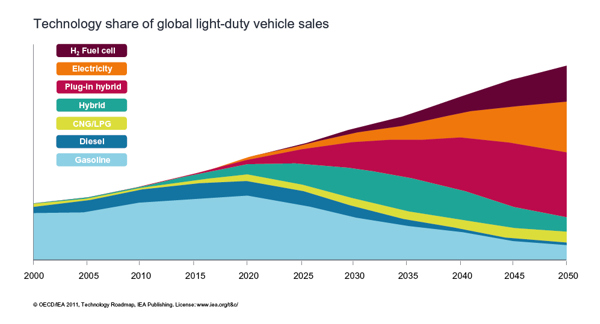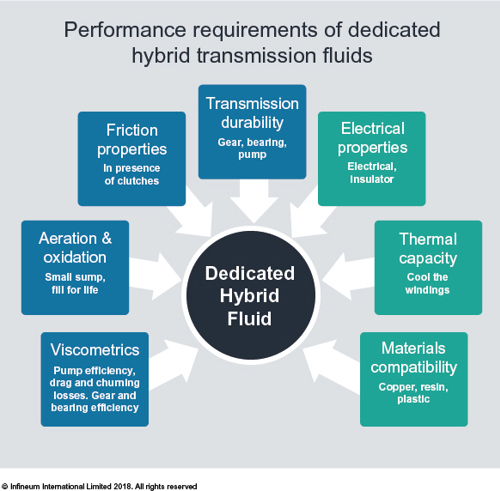Driveline
Rising demand for DCT fluids
09 December 2025
14 August 2018
The impact of a shift to e-mobility on transmissions and fluids

With the transport sector reported to account for some 23% of global, energy-related greenhouse gas emissions it is coming under increased pressure to cut CO2. Vehicle electrification - or e-mobility - is seen as one route towards meeting the ever-tightening targets being introduced the world over. Insight explores the latest trends and the implications for future transmission systems and fluids.
To meet their greenhouse gas emissions reduction obligations, most OEMs are looking at some level of vehicle electrification. Some have made strong public statements – revealing plans to phase out vehicles solely powered by conventional internal combustion engines (ICE) from their product line-up. The headlines have been bold:

These statements are fairly typical of the commitment to electrification being expressed by the broader automotive industry.
To 2040, the strongest e-mobility growth in the global light-duty vehicle (LDV) market is forecast to come from increased sales of hybrid vehicles.
Since hybrids combine conventional hardware with an electric propulsion system, this means that a high proportion of new LDVs at this time will still contain an ICE, which in most cases will be fuelled by gasoline. However, over the same timeframe, it looks likely that the share of full battery electric vehicles (BEV) may only reach 15% of global LDV sales.

Light-duty vehicle technology is expected to evolve rapidly
There are many opinions about the future of passenger car electrification and predictions on future sales and market dynamics vary widely. Whatever scenario plays out, the associated changes in the powertrain are expected to have a knock-on effect to the design of transmission hardware and fluid requirements.
Currently, annual production of hybrid transmissions stands at around five million units, the majority being electric variable transmissions (EVT). These are commonly used in combined (power split) hybrid vehicles, such as the Toyota Prius and Lexus CT Hybrid. In EVT transmissions, which were pioneered by Toyota, the electric motor is integrated into the transmission, which means that the fluid makes contact with the hybrid system. Despite this fact, conventional automatic transmission fluids (ATFs), such as Toyota WS, MERCON® LV, DEXRON® VI and Honda ATF DW-1, are currently being used. This is most likely because the relatively low production volumes do not justify the development of a bespoke fluid.
In the next few years, strong growth in the production of hybrid transmissions is expected, with significant increases in the use of both stepped automatic and dual clutch transmissions.
The use of current fluid technology in these hardware systems might suggest that their fluid performance requirements are broadly similar to those delivered by conventional transmission fluids. However, in our view, this really depends on where the electric motor is integrated into the drivetrain.
In some designs, the electric motor is integrated into the transmission and is in direct contact with the transmission fluid. In these cases, in addition to delivering the usual ATF performance, the fluid needs to have the correct electrical properties and the ability to protect the motor windings from corrosion. In such applications, if conventional fluids are used, an increased focus is required on their compatibility with copper and other metals used in electric motors and on the electrical properties of the fluid.
As e-mobility becomes the norm and hybrid installations become increasingly mainstream, it is likely that OEMs will look to further improve the performance of their propulsion systems by introducing dedicated hybrid transmission fluids. And, growth in the production volumes of hybrid transmissions makes the formulation of hybrid-specific fluids more commercially attractive.

There is a clear requirement for hybrid transmission fluids that can deliver unique performance attributes including high volume resistivity to act as an insulator, thermal capacity to effectively cool the windings, and excellent materials compatibility. However, in addition to these new attributes, the fluid must also maintain traditional performance features including friction, oxidation and wear control.
Infineum has undertaken work to explore the volume resistivity of various base stocks and to assess the impact of the treat rate and structure of performance additives on the fluid’s electrical properties. Our findings indicate that the requirement for enhanced electrical properties in these dedicated fluids is likely to drive the use of higher quality and less polar base stocks, such as poly alpha olefin (PAO) and Group III/III+, which can deliver high volume resistivity - desirable in order to avoid electrical short circuits.
Testing has revealed that the careful selection of performance additives can help to extend copper corrosion protection. However, it is also essential to ensure the fluid continues to provide sufficient wear protection and electrical properties throughout its lifetime.
In our view, formulators will need to work hard to strike the right balance between electrical properties, gear protection and materials compatibility in transmission fluids designed specifically for use in hybrid vehicles.
Technology from Infineum is already used in every type of electrified automatic transmission fluid application and work continues on the development of new solutions to meet the challenges of this evolving market.
Sign up to receive monthly updates via email
